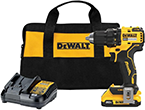Weatherproofing Your Home
Written by Lee Wyatt (last updated January 22, 2021)
Perhaps the best possible time to ensure that your home is fully weatherproofed is during the summer months. However, that doesn't mean that you need to wait, so get to it now. Weatherproofing your home will not only help make things more comfortable for you year round, it will also help your wallet. By taking a few simple precautions, you can make sure that you are not accidentally loosing any heat or cooling. This will, in the long run, also help to ensure your energy costs are down. All you need to do is follow these simple suggestions.
Materials needed:
- Handsaw
- Wood chisel
- Caulking gun
- Utility knife
- Screwdriver
- Hammer
- Tape measure
- Plane
- Pry bar
- Tin snips
- Hair dryer
- Silicone caulk
- Expandable insulating foam
- Weather stripping
- Foam gaskets
- Plastic sheeting
- Wood filler
Process:
- Make sure all your caulking is good. Take a look at all your windows, your dryer vent, and any other vents or exhaust ports you may have along your house. Make sure that the caulking along these are still good, and doesn't need to be replaced. In the event that they do, make sure that you fill any cracks that there may be, or simply replace the caulking to prevent any drafts.
- Check all exterior spigots. Take a look at the water spigots that you may have outside. Often these little places are overlooked when insulating your home. Simply take some expandable insulating foam and spray it where the walls and the spigot meet to help ensure that there is a tight seal.
- Install window well covers. By simply installing a few window well covers around any basement windows, you can dramatically cut off the loss of heat, and reduce the amount of heat you use. When you install these, make sure that you caulk around the edges to help ensure that there is a tight seal.
- Seal your air conditioners. When you don't need your air conditioner, make sure that it is covered and sealed properly. Regardless of when you use your air conditioner, make sure that wherever it is attached to the house to ensure that there are no leaks.
- Install gaskets around electrical fixtures. Surprisingly, one of the most common locations for a leak is around electrical fixtures. These are often simply left open, with no protective coverings other than the hard plastic faces. Install some soft rubber gaskets over the fixtures to provide some tougher insulation.
- Seal along baseboards. Remove the base molding along the bottom of the walls, and check to see if there is any cracks where the floor and the walls meet. If there is, then apply some expandable insulation foam to prevent any drafts.
- Use interior plastic sheeting. During the colder months, apply some plastic sheeting to the interior of your windows to offer a little bit better protection against the cold. Often all you need to do is tape this plastic to the window frame and then warm it with a hair dryer. This will remove the wrinkles, and allow you to see through with little or no problem.
Author Bio
Lee Wyatt
Contributor of numerous Tips.Net articles, Lee Wyatt is quickly becoming a regular "Jack of all trades." He is currently an independent contractor specializing in writing and editing. Contact him today for all of your writing and editing needs! Click here to contact. Learn more about Lee...
Country Home Decorating
Country home decorating is not necessarily about country music (though many people are inspired by it). Instead to many ...
Discover More
Pecan Pies
If you ask any group of people what there favorite type of pie is, there is a very good chance that at least one person ...
Discover More
Ramen Noodle Salad
Oriental themed salads can often be a tad expensive, at least that is the case if you aren't willing to use a bit of ...
Discover More
More Home Improvement Tips
How to Insulate Your Home
There is more to insulating your home than throwing up some random insulation that you get from the local home ...
Discover More
What are R-Values?
Have you ever wandered through the insulation aisle in your local home improvement store and seen noted on the products ...
Discover More
Utility Rebates for Energy-Efficient Homes
The main idea behind energy rebates and incentive programs offered by utility companies is to encourage people to use ...
Discover More

Comments